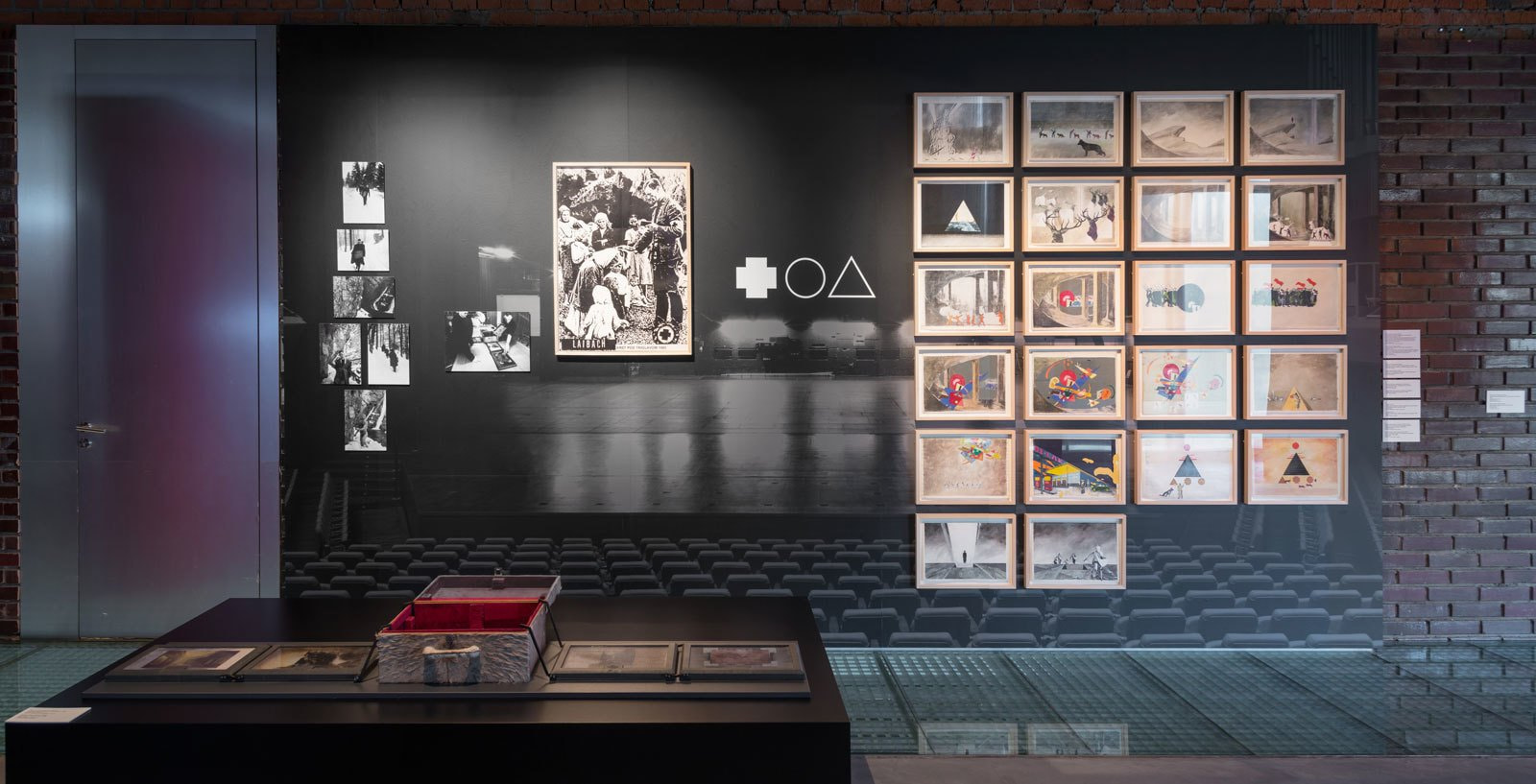NSK: FROM KAPITAL TO CAPITAL. Exhibition guide
The exhibition is accompanied by a free booklet in Russian and English which provides information on the various groups and their works, as well as a comprehensive introduction to the movement.
The collective Neue Slowenische Kunst was founded in 1984 by three groups—the multimedia group Laibach (formed 1980), the visual arts group IRWIN (formed 1983), and Scipion Nasice Sisters Theater (1983–1987). In the same year, the three groups founded a fourth group, the design department New Collectivism. Later, NSK established other subdivisions: the Department of Pure and Applied Philosophy, Retrovision, Film, and Builders.
The emergence of NSK is closely connected to the economic and sociopolitical context of the 1980s, a turbulent decade that preceded the collapse of the old world order and heralded the ever-increasing reach of capitalism. As a unique self-organized alliance formed in response to this situation, NSK proposed a different system and a new type of institution, developing its own principals of organization, economy, and terminology for the collective’s practice. The proposal they put forward challenges the simplistic binary opposition of socialist versus capitalist ideology, marking NSK as a global cultural phenomenon transcending its specific time and space.
Neue Slowenische Kunst (German for New Slovenian Art) operated with anachronistic images, juxtaposing seemingly contradictory artistic traditions in an ambiguous fashion: Nazi and communist, realist and abstract, Western and Eastern. By repeating the symbols and rituals of several social systems in their various events, concerts, theatrical performances, and paintings—as well as programmatic texts, codified attire and behavior—NSK performed a monumental act of exorcism, framing a world of alternative rules and conventions. The collective’s German name challenged the long-repressed trauma resulting from more than a thousand years of German political and cultural hegemony over the small nation of Slovenia. Using the “retro” method as a new artistic approach, NSK looked back in order to examine the present as a continuous and repeated trauma of the past, while simultaneously envisioning a future beyond the failures of socialism or capitalism. In 1992, after Slovenia gained independence with the breakup of Yugoslavia, the group founded an alternative state—the “NSK State in Time”—which brought together a transnational community grounded in aesthetics and thought rather than territorial or eсonomic principles.
NSK can be understood as both a complex and ambivalent reflection of the global events that characterized the 1980s and an intrinsic part of a subculture in Slovenia which took collectivism seriously. The collective succeeded in articulating, at least on an aesthetic level, what the newlyemerging civil society movements in the country could not. Avoiding attempts to improve the existing societal system through critique which subscribed to the values of that system, NSK aimed to bring about fundamental changes through artistic approaches such as the retro method, estrangement, overidentification, appropriation, and by underscoring the economy of pleasure.
In the current moment, thirty years after the collective was founded, NSK’s principles, artistic methods, reactivating of symbols, and their efforts to produce a commons rather than theorizing one resonate with particular strength. In many ways, what unfolded in the 1980s as artistic and political propositions are becoming fully visible and comprehensible only now, making this current presentation of NSK’s global legacy all the more pertinent.
